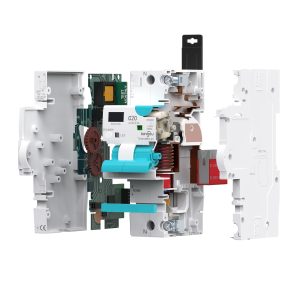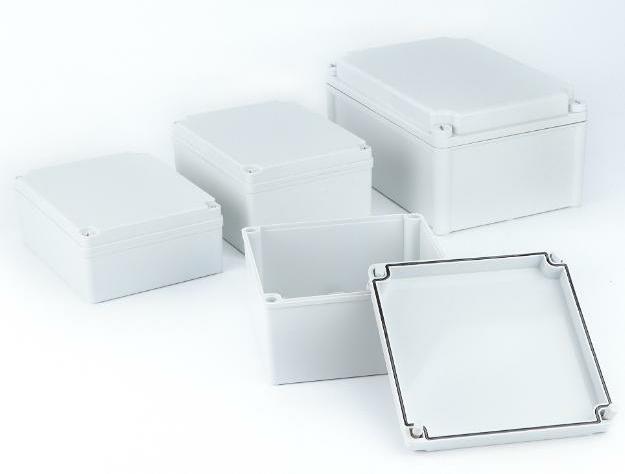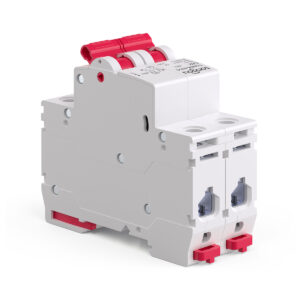
RCBO Trips at Night? Causes, Diagnosis, and Lasting Fixes
RCBO Trips at Night? Causes, Diagnosis, and Lasting Fixes Already know what an RCBO is? Great. This page skips the basics and focuses on nocturnal

In most cases, a junction box is required for outdoor lighting installations. A junction box houses electrical connections and protects them from external elements such as moisture, dust, and physical damage. It ensures that the wiring is neatly contained and reduces the risk of electrical hazards, making your lighting installation both safe and durable.
However, there are scenarios where a junction box may not be needed. For example, if you are using specific light fixtures designed for direct mounting or have integrated junction boxes, additional junction boxes might be unnecessary. Always refer to the manufacturer’s instructions and local electrical codes to determine the requirements for your specific installation.

1. Protection: Outdoor environments expose wiring to harsh conditions. Junction boxes protect connections from rain, snow, dust, and pests, ensuring long-term performance and safety.
2. Organization: A junction box keeps electrical connections organized, making it easier to maintain and troubleshoot the system.
3. Safety: By enclosing the connections, a junction box reduces the risk of electrical shorts or fire hazards, thereby making the installation safer.
4. Compliance: Local building codes often require the use of junction boxes for outdoor electrical installations. Using them ensures that your installation is compliant with regulations.
5. Durability: A well-protected electrical connection is less likely to degrade over time, enhancing the lifespan of your outdoor lighting setup.
1. Integrated Junction Box Fixtures: Some outdoor lights come with built-in junction boxes designed for direct connection to the power supply. These fixtures do not require additional junction boxes.
2. Non-Electrical Lighting: If your outdoor lighting doesn’t require electrical wiring (e.g., solar lights or battery-operated lights), a junction box is not necessary.
3. Low-Voltage Systems: For low-voltage landscape lighting, specialized connectors and distribution hubs are often used instead of traditional junction boxes. These systems are designed for safe outdoor use without additional box enclosures.
4. Temporary Installations: Temporary lighting setups, such as holiday lights, generally do not require junction boxes, though it’s still important to use weatherproof connections and follow safety guidelines.
Always consult with an electrician or refer to local electrical codes to ensure compliance and safety in your specific situation.

While outdoor lighting seems like a simple weekend project, many DIYers unknowingly make small installation mistakes that lead to big problems over time. The YouTube video “Dangerous Mistakes DIYers Miss When Installing Outdoor Lights” highlights several critical points that are worth emphasizing for anyone working with outdoor electrical junction boxes and lighting fixtures.
One of the most common issues shown in the video is failing to use a proper weatherproof junction box or gasket seal. Many homeowners simply mount the fixture directly onto a wall or siding, leaving wire connections exposed to moisture and UV radiation. Even a tiny gap can allow rain or condensation to enter, eventually causing short circuits, tripping breakers, or corrosion on terminals. Always use boxes rated for IP65 or higher, and ensure the cover plate and seals are tightly fitted.
The video also stresses that some DIYers skip the most basic safety step — cutting power at the breaker before installation. This not only violates safety codes but also puts you at serious risk of electric shock or arc faults. Always verify power disconnection with a voltage tester before touching any wire or terminal.
Even when a junction box is used, improper sealing can make it useless. Loose conduit entries, missing locknuts, or unsealed threads are all common in DIY jobs. The result? Water ingress, dust accumulation, and pest intrusion that slowly degrades your system’s integrity. Applying a small bead of silicone around mounting points or using watertight strain relief fittings can make a huge difference.
The video also points out that indoor-rated cables or connectors are often used outdoors. This is a major hazard since these materials can’t handle prolonged exposure to sunlight, rain, or temperature changes. Use outdoor-rated wires (UF-B, THWN, or similar) and ensure all wire nuts or connectors are weatherproof types designed for damp or wet locations.
Grounding mistakes are another silent hazard. Some fixtures or boxes are installed without a proper grounding conductor connected to the metal body or mounting strap. Over time, this can create shock hazards during rain or condensation events. Always make sure your junction box and light fixture are properly grounded and compliant with local electrical codes.
While most outdoor electrical issues come from poor sealing and improper junction box usage, Tongou’s Smart Waterproof Box Switch provides an all-in-one solution designed specifically for outdoor and industrial-grade lighting environments.
Encased in a compact IP67-rated housing, the unit fully protects its internal relay switch and wiring terminals from water, dust, and corrosion. It combines traditional electrical protection with modern smart control, allowing users to manage power remotely through a mobile app or automated schedule.
With this design, homeowners and installers can:
Avoid the need for multiple separate waterproof junction boxes.
Enhance safety by isolating connections inside a sealed compartment.
Simplify control through remote or timed switching — ideal for garden lights, outdoor signage, and smart energy systems.
In essence, it transforms what used to be a complex, risk-prone installation into a plug-and-protect smart solution.
Tongou’s smart waterproof relay box not only meets IP67 waterproof standards but also helps ensure every outdoor lighting project remains safer, smarter, and longer-lasting.
Q: Are junction boxes required by building codes for outdoor lighting?
A: Yes, many local building codes require junction boxes for outdoor electrical installations to ensure safety and compliance. Always consult local regulations before starting your project.
Q: Can I install floodlights without a junction box?
A: Most floodlights require a junction box for safe installation. However, certain models with integrated junction boxes can be mounted directly. Check the manufacturer’s specifications for details.
Q: What type of junction box should I use for outdoor lighting?
A: Use weatherproof junction boxes specifically rated for outdoor use. These boxes are designed to withstand exposure to elements and provide robust protection for electrical connections.
Q: How do I install a junction box for outdoor lighting?
A: To install a junction box, follow these steps:
Turn off Power: Ensure the power is off to avoid electrical hazards.
Mount the Box: Secure the junction box to a solid surface, such as a wall or post.
Run Wiring: Feed the electrical cables through the box’s knockouts, seal any unused openings, and make the necessary connections.
Seal the Box: Use appropriate gaskets and covers to ensure the box is weatherproofed.
Connect the Fixture: Attach your light fixture to the junction box and restore power to test the installation.
Using a junction box for outdoor lighting significantly enhances safety, durability, and compliance with local building codes. While there are scenarios where a junction box may not be necessary, most standard installations benefit greatly from their protective features. Whether you’re upgrading security lighting, adding decorative elements, or illuminating pathways, a junction box ensures that your electrical connections remain organized, safe, and weatherproof. Always consult with an electrician and adhere to local regulations to achieve the best results for your outdoor lighting projects.


RCBO Trips at Night? Causes, Diagnosis, and Lasting Fixes Already know what an RCBO is? Great. This page skips the basics and focuses on nocturnal

MCB B/C/D Curves in Practice: How Inrush Current Shapes Your Choice This guide assumes you already know what an MCB is. If you need a

SPD Coordination for Solar PV and EV Charging: Where to Place Type 1/2/3 Already know the difference between Type 1/2/3 and AC vs DC SPDs?

MCB vs MCCB: A Practical Guide to Icu/Ics and IEC 60898 vs 60947-2 This guide assumes you already know what a breaker is. If you

tongou was established in 1993 and is the trademark of Changyou Technology. We position ourselves as providers of intelligent product solutions for high and low voltage electrical systems, taking on solving customers’ pressures and challenges as our responsibility and creating value for them. We utilize intelligent products to serve global customers, making life smarter and more convenient to benefit your life.
Paidong Industrial Zone Qiligang,Yueqing City,Zhejiang province,China.
Sales: [email protected]
After-sales: [email protected]
© 2025 Changyou Technology. All Rights Reserved.

